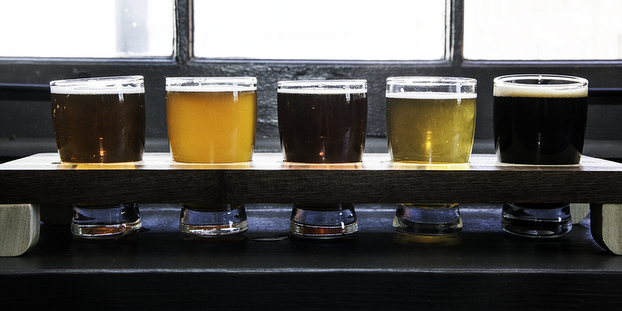
Coffee beer is nothing new, but the majority of the industry does seem to stick to the norms of how to use coffee — using a dark roast in a stout, porter or darker ale. And by god, if more than a handful of brewers are doing the same thing, that means it is time to innovate and do something new.
At the Great American Beer Fest this year, your CBB pals, dedicated professional business journalists that we are, took it upon ourselves to walk the floor and sample some beers. We didn’t ask for this burden, but we accepted it. A real standout beer from the day was a coffee cream ale from Wolf’s Ridge Brewing in Columbus, Ohio, which really stirred our imagination. Time to learn more.
Clear Sky Daybreak, the aforementioned coffee-infused cream ale, was originally intended as a one-off batch, but is now a local staple. This madness started when Wolf’s Ridge began working closely with a local Columbus coffee shop in order to start approaching the coffee bean’s aromatic and flavor complexities as you might those of a hop. By combining the right styles with the right roasts, Wolf’s Ridge now has a slew of coffee beers from cream ales to stouts to hefeweizens that are interesting and innovative. And fun!
We had a chat with head brewer Chris Davison to learn more about his approach and to perhaps glean some best practices other brewers could replicate in their own journeys into the outer edges of craft beer experimentation.
CBB: Why hasn’t this always been the mindset when using coffee? And why did you think this new approach would work?
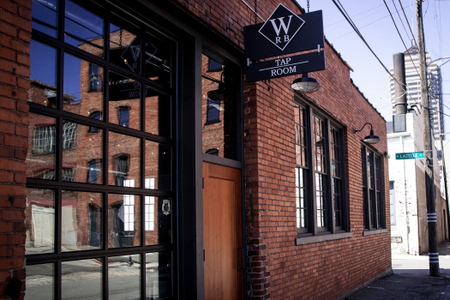
Davison: It’s hard to say with any certainty why coffee beer has largely been so one note, but I’ll speculate:
Early coffee beer pioneers were breaking rules by simply adding coffee to beer, not yet thinking about trying to challenge their fans with unique and complex coffees. Additionally, let’s not forget that the easiest rule to follow in beer and food pairing is to complement flavors. Dark roast and espresso type coffees actually do work very well in many dark and malty beers because the flavors are very complementary.
Fast forward to my era in craft beer. I grew up drinking Dogfish Head and local brews that pushed so many boundaries I thought that it was not only normal, but that it must have always been that way. Hell, my first beer was Guinness, and I didn’t drink my first Budweiser until after I was homebrewing. I kid you not. My generation is spoiled and always looking for the newest and most challenging beer and food out there. Come to think of it, I put coffee into my very first homebrew. The very first one! I knew nothing. It was a pre-made extract kit, but I was audacious enough to add coffee to my Black IPA.
For most people, coffee is a flavor associated with roasty bitterness and the color black. Many people I know actually settle for bad/cheap coffee because they don’t know that coffee can have just as much variety of flavor, aroma and texture as any beer. If you believe that coffee can only taste acrid and bitter, and assume everyone else agrees, then you don’t really care all that much about flavor matching coffee with your beer. You grab one type of espresso and never switch, not knowing what different varieties of coffee are capable of when paired with beer.
As soon as I discovered how unique coffee could actually be, I started digging in. I think everything has a place, and these unique coffees are as varied as hops. If you choose a beer strategically, the right coffee will not only complement the beer, but make it pop in new and unexpected ways.
RELATED: Barrel-aging Q&A with Side Project Brewing’s Cory King
CBB: Walk us through some of the trial and error. How did you approach it, and what were the early results?
Davison: I began like everyone else; I put espresso beans into my imperial stout Dire Wolf. It was amazing and people loved it. It’s still arguably our most sought after beer. One day I went into our restaurant to grab some espresso — we use One Line’s Method Espresso — and we were out. I couldn’t wait to add the coffee to the beer so I used the house roast, a Colombian medium roast called El Progreso, instead. It worked really well. It was similar but smoother and more chocolatey than bitter roasted.
I then rushed to One Line and procured some of its Ethiopian Blue Konga. The coffee had notes of blueberry, lemonade and shortbread. It worked, but the coffee character was so mild I moved the beer into a second keg with more coffee and fresh blueberries. The end result was fantastic, but it made me realize why everyone uses dark roasts in their stouts and porters: anything light in flavor just gets buried behind the huge bold character of the beer. If you treat your coffee like a food pairing, you’ll be far more successful in the end.
CBB: How was the actual brewing process different, if at all?
Davison: The brewing process hasn’t really changed. We infuse coffee — amongst a huge variety of other things — into our existing lineup of beers. The infusion process has changed over time, though. At first I was tossing whole beans into a special keg we use in the process. The results were phenomenal, but the beans would sometimes clog things up. I then briefly experimented with coarsely crushed beans in a bag. This is a preferred method used by many brewers, but personally, I find the flavor of crushed coffee beans to be akin to the aroma of spent coffee grounds. It elicits a very recognizable aroma and flavor profile, but I feel it covers up all of the nuanced character of a high-end bean with astringent bitterness that is released by cracking open that bean.
There are 20 other ways to infuse coffee, but I personally am committed to using whole beans in my process now, only I bag the suckers and weigh them down.
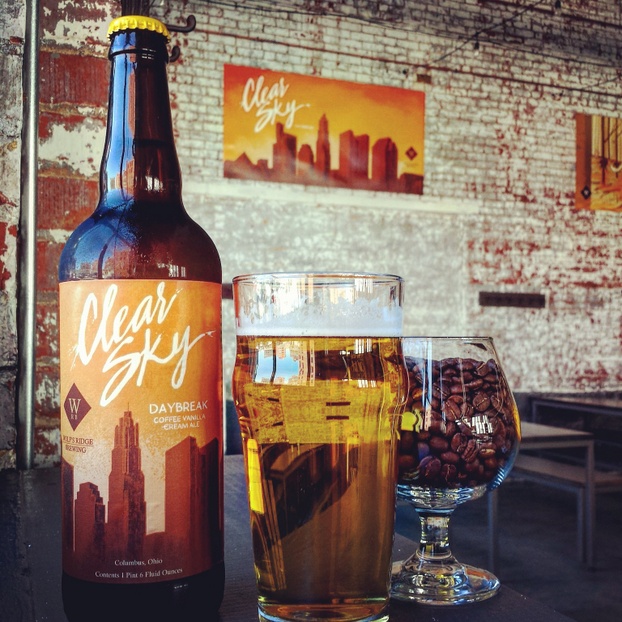
CBB: Can you describe the actual results? How do the flavors work and why?
Davison: When done properly, the essence of the coffee is extracted into the beer. The coffee character is smooth and more likely sweet or acidic than bitter when using a light or medium roast. As I mentioned, pairing an appropriate beer is key to giving the desired traits room to shine.
Despite having amazing success with light roasts in lighter beers, I keep trying new things in our imperial stout. At GABF, during our seminar, I poured Dire Wolf infused with Costa Rica Alma Negra coffee. The result was entirely different from our regular espresso version. In fact, I confessed to Dave Forman, the co-owner of One Line — our local coffee provider — that I feared people wouldn’t believe there was actually coffee in the beer! The flavor imparted by the coffee was red fruit, merlot and brownie, and was very sweet compared to the base stout.
CBB: How do you know if you’ve messed it up?
Davison: I know when I dislike it, as trite as that sounds. I was lucky to get my contact time dialed in early, which is key to preventing excessive astringency and bitterness from the coffee. This is my main concern when using a new coffee or infusing into a new beer.
There was a time early on when I was schooled in the differences between coffee. We have a coffee-infused cream ale we call Clear Sky Daybreak, and it’s crystal clear and light gold in color, yet smells and tastes like coffee. I always used our house blend in it — El Progreso — until the restaurant was out one day. I grabbed the Method Espresso instead and assumed no one would know the difference. The next day I tasted the beer and was floored — the espresso was overpowering in the minimalistic cream ale and I vowed to never use it again.
RELATED: Friday Fun: Coffee shop has extra warehouse space, says: ‘Let’s make beer too’
CBB: What are customers saying?
Davison: They love the coffee infusions, no matter what the base beer is. The process was so popular we held an event focused on coffee beer. It was a horizontal tasting of sorts; we took our brown ale and infused four kegs, each with a different coffee. We then paired each coffee beer with a fresh pour of the coffee used side by side.
At the time, I worried people wouldn’t be able to discern the differences, but I was wrong. Everyone seemed to have a favorite and easily picked out the nuances of each coffee pairing. It was such a success, it inspired our GABF seminar proposal, and we’re a week away from our second coffee pairing event in our taproom. This time we selected coffees specifically meant to pair with a specific beer. Five different coffees in five different beers. Many I’ve never attempted before. The beer styles are:
- Cream Ale
- Hefeweizen
- Session IPA
- Doppelbock
- Imperial Stout
I can’t wait to see how it’s received.
CBB: Do you have any other tips or insights for other brewers that you’ve learned along the way?
Davison: Don’t take my word for it; everyone’s system and process is unique. If you prefer boiling your beans or putting them ground into the fermenter, go for it! Experimentation and trial and error are the basis for success and innovation.
I highly suggest you sit down with your local roaster and try coffees. Many of them. Learn to drink it black and to judge your coffee like a beer in competition. Ask questions and learn about your ingredient. You don’t throw random hops that have been abused into your IPA do you? Why would you just toss the first dark roast you find into your beer?
Don’t fear light roasts. I’d be more worried about desired flavor than degree of roasting when selecting a coffee.
CBB: Any future plans or gears turning as a result of this?
Davison: Short term, I want to find the perfect coffee for our IPA. I want to run tests and collect some hard data. I have our lab tech getting the materials to test for caffeine content.
Long term, Dave and I have been discussing trying to use coffee like we use hops, literally. He’s brainstorming a method of under-roasting that might mimic hop bitterness. Then we can select a particularly fruity coffee to “dry hop” with. It’s a crazy idea, but the more we discuss it, the more feasible it sounds. Plus, good coffee is still on average cheaper per pound than high-end rare aroma hops.
I’d like to close by mentioning our evolving philosophy: Treat coffee like hops. Light roasts are not evil and neither is slight acidity or sweetness a flaw. These things are preferred amongst coffee aficionados, and they’re going to exist in most, if not all, of the super unique coffees you encounter.

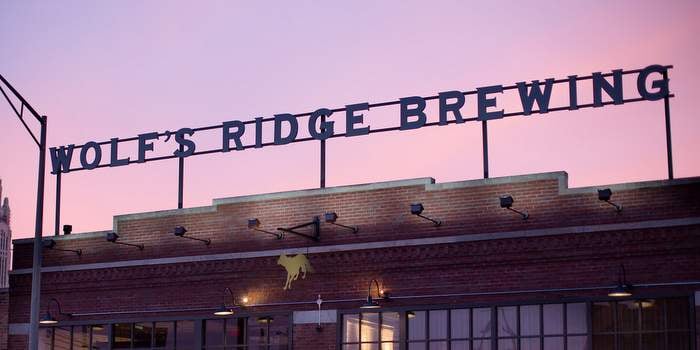
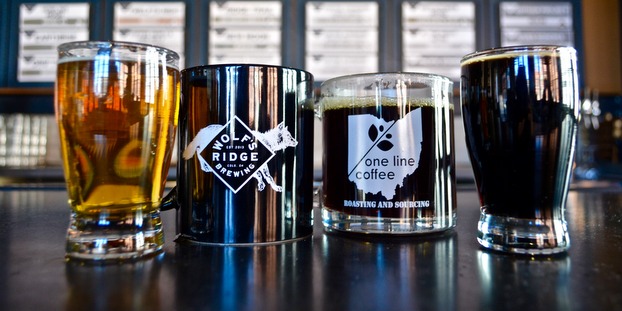
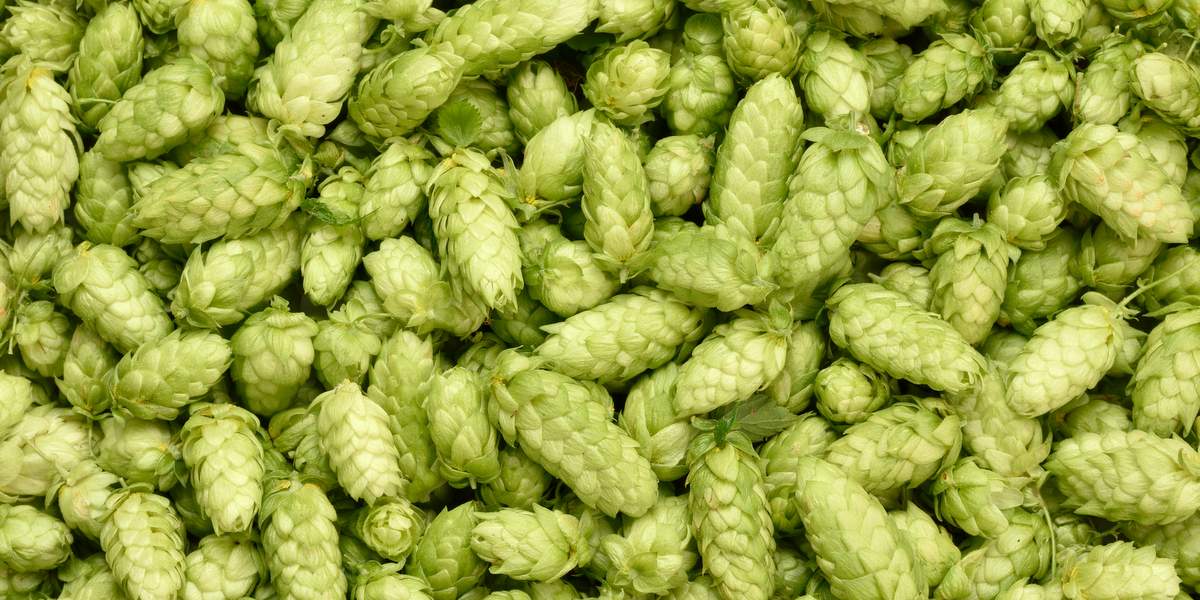
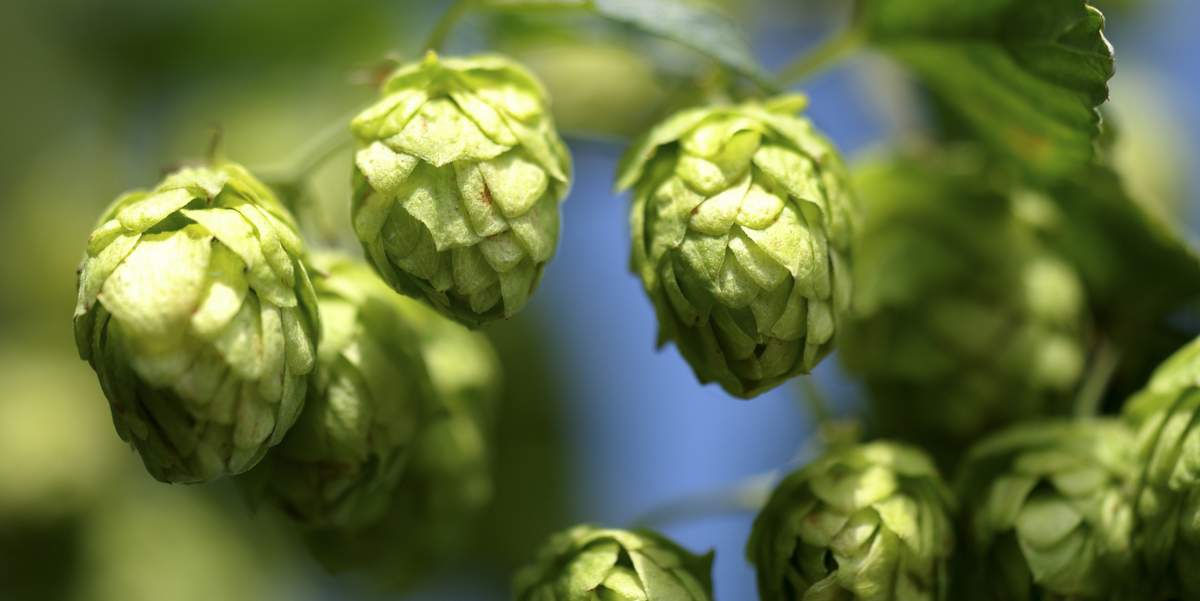
RT @WolfsRidgeBrew: Coffee beer innovation is here. See how our head brewer uses coffee beans like hops in his Q&A with @CraftBrewingBiz ht…
Coffee beer innovation is here. See how our head brewer uses coffee beans like hops in his Q&A with @CraftBrewingBiz https://t.co/FgFTP65qa7
Nice article with some cool information and brewer’s philosophy. I have not had the opportunity to enjoy Wolf’s Ridge coffee cream ale (or any of their other coffee beers) but one of my current favorite beers is Ballast Point Calm Before the Storm, which is a coffee and vanilla cream ale.
Serge Lubomudrov liked this on Facebook.
Shawn Clark liked this on Facebook.
Krones AG liked this on Facebook.
Jennifer Reed liked this on Facebook.
Wow, such a fantastic and informative post, thank you!
#CraftBeer #CraftBrewing #Beer #BeerBiz Treat coffee beans like hops: An innovative approach from Wolf’s Ridge … https://t.co/55COsbYfIj
@CraftBrewingBiz Thanks for giving us the chance to share our insights around coffee beer! Appreciate the share!